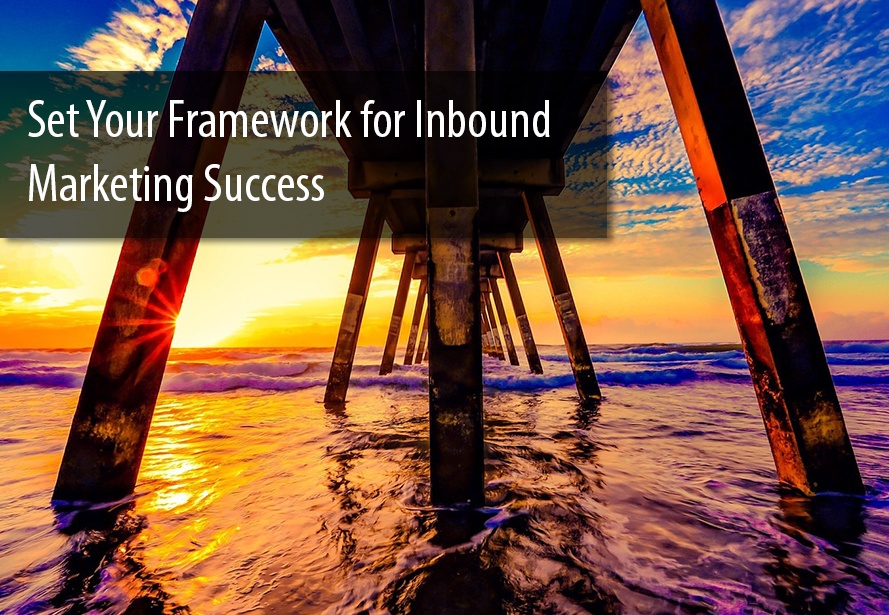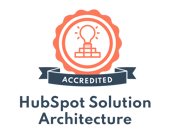The Inbound Marketing Framework for Repeatable, Measurable Results
 If you're like most builders and suppliers, you are eager for sales and marketing results that you can count on. You want more website visitors, more leads...and ultimately, more customers.
If you're like most builders and suppliers, you are eager for sales and marketing results that you can count on. You want more website visitors, more leads...and ultimately, more customers.
In the minds of many business owners, jumping in to tactics is often perceived as the fastest way to achieve those results and growth. The truth, however, is that inbound marketing approaches that begin by focusing on tactics tend to end in failure. The good news is that there is an easier way.
If you’ve made a business decision to focus on inbound marketing, congratulations; inbound is the most effective, proven marketing method for doing business online. According to HubSpot's State of Inbound report, inbound marketing campaigns achieve higher ROI than outbound (strategies like direct mail or advertising).

But how do you make sure all of the tactics—blogging, social sharing, developing resources for your website visitors, lead nurturing emails, and so on—all work together the way they are supposed to?
Just like the process of building a house, effective inbound marketing means following a detailed blueprint and a step-by-step approach in order to be successful.
As an agency, we take our approach to inbound marketing seriously, which is why we engaged the good folks at DoInbound to share their repeatable, scalable, measurable inbound framework with us.
We then applied what we learned from the DoInbound framework to the work we do with clients, and we now rely this powerful 4-step process on every project in order to help our clients to achieve better results from their website and online marketing.
Our framework for inbound marketing looks like this:

Your Repeatable, Scalable, Measurable Inbound Marketing Framework
Phase 1. Develop Your Inbound Marketing Blueprint
In any building or remodeling project, developing a strong blueprint may include everything from floor plans, dimensions, views from different perspectives, window and door placements, electrical and lighting requirements, and specific materials needed at different stages of the project.
The inbound marketing process needs its own blueprint as well.
The Blueprint is your strategic roadmap designed to unite and align your company under the mission of systematically sharing answers to prospects’ and customers’ questions through helpful online content.
Your Inbound Marketing Blueprint should include:
- Current metrics to give you benchmark data of where you are right now, and business goals to keep you on track moving forward
- Buyer Personas of your ideal customers that uncover their concerns, questions, and the decision criteria you must address to win their business
- The Buyer’s Journey of your ideal customers to get crystal clear about what kinds of messages they need and, even more importantly, when they are most likely to be receptive to your message
- What you'll need to set up in your marketing automation technology in order to support the backend processing of your visitors, leads, and customers on your website
- Compelling content topics for blogs, content offers, and lead nurturing emails that align with the Buyer’s Journey and that are most helpful for your customers and salespeople
- Your plan for SMART inbound marketing campaigns where all of your activities work together, giving you exponential results
Creating an inbound strategy based on your primary target audience puts you on the fast-track. Your GamePlan is the blueprint that will guide your inbound marketing activities for the upcoming months.
Phase 2. Build the Engine
In the building process, once you have a solid blueprint, the next step is to prepare and lay the foundation and frame the home. In the same way, with your Inbound Marketing Blueprint strategy and roadmap in place, it's time to create the strong foundation and content framework for bringing that strategy to life.
The Build the Engine phase involves creating an inbound marketing funnel designed to share content specific to your target audience, educating them through each stage of their Buyer’s Journey. Here's where you configure your marketing automation and buyer personas, set up workflows, write foundational content offers, build landing pages, set up conversion forms, and build lead nurturing email sequences.
Contrary to what you might expect, it helps to start at the end of the Buyer’s Journey and work backwards to the beginning in order to create content offers designed to answer the questions and pains faced at each stage.
Then, using your marketing automation tool (we recommend HubSpot), it's time to build a powerful and personalized lead generation engine. Lead nurturing is all about education; you will want to set up your system to deliver personalized emails to the leads in your company's database, automatically.
Phase 3. Optimize Your Website
You may be wondering, "Isn't it time to start blogging yet?"
Nope. Not quite yet.
(We know...you're raring to start cranking out content!)
However, it’s critical to tweak or redesign your website to increase your website worth before launching your content campaigns.
When you're building a home, some of the most important elements are those that run the show quietly in the background.
It's the same with successful inbound marketing.
In order to successfully launch and maintain your inbound strategy, you need a website that will attract and convert. We live in a world where website design and development practices are just as—if not more—important than content strategy. Website design is inbound and cannot be ignored.
But, according to HubSpot, "managing a website was the third biggest challenge for marketers"...especially for "companies who don't have all the talent in-house required to cover content, optimization, design, and back-end website management."
If your website isn’t working hard for you, you’re missing a huge opportunity in lost visitors, leads, and sales conversations. Plus, your target audience isn’t likely to take you seriously as a competitive business in today's digital—and demanding—marketplace.
In this crucial phase, make sure your website is optimized with the latest search-engine-optimization tactics, conversion opportunities, back-end processing, and user experience design, all equipped to drive people into your sales funnel. Consider your website optimization just as important as having a home that stays warm in the winter and cool in the summer, has running water when you turn on the tap, and has lights that turn on when you flick the switch.
Phase 4. Run Your Inbound Campaigns
DoInbound defines inbound marketing campaigns as "a collection of online tactics that are united by a central purpose, typically to attract visitors to a landing page where they can become a lead."
When most home owners think of their new home or recently remodeled kitchen, they tend to focus on the "tangibles" they'll be able to see and experience: the beautiful bamboo flooring that will be so much easier to maintain, the energy-efficient windows that won't leak and let in drafts during a cold Minnesota winter, or the curb appeal (and easy care) of the eco-friendly siding that will last for years.
Similary, the first thing people usually think of when they consider inbound marketing are the blog posts, LinkedIn mentions, social media shares, and content offers.
In other words, we tend to focus on what we can see and experience.
For an inbound campaign to be successful, however, you need to lay the foundation with the previous three steps.
Each step adds a critical layer to the foundation of your inbound journey. With a persona-centric strategy, an automated engine ready to nurture leads, and a website designed as an engaging destination resource, you’re now ready to invite new traffic.
Now—finally!—is the time to focus on creating content.
And not just any content, but strategic content.
Each Inbound Campaign should begin by identifying three basic elements: a start date, an end date, and a SMART goal.
What date will you start running your campaign?When will your campaign end?
What results would you like to see with your campaign? 300 more visitors by the end of the campaign? Increasing your conversion rate by 3%? The more clear you are about the results you want to see, the more you can tailor every step of your campaign to focus on achieving that result.
With these three elements in place, it's time to design the appropriate campaign and properly measure the effectiveness of that campaign.
Using your timeframe and campaign goal, create an Awareness Stage Content Offer as the centerpiece of your campaign followed by a series of related blog posts and social media designed to direct traffic toward this one point of conversion.
Per DoInbound, a 90-day period is an optimal length for an Inbound Campaign, allowing enough time to collect a significant amount of analytics feedback and still be short enough to nimbly pivot as needed, based on the data you collect.
As your content begins to be noticed by your website visitors and they can see that your website is a great resource that answers their questions and concerns, provides great value, and supports them every step of the way, you will start to see results as you attract more and more visitors, convert leads, and close and delight your new customers.
And because you've been strategic, you can measure the impact of each component of your marketing activity. You can review your campaigns, look at what worked and what didn't work, and tweak and improve as you move forward.
The Inbound Marketing Framework Recap
To get the best results with your inbound marketing, use a repeatable, scalable, measurable process that includes:
- Create Your Inbound Marketing Blueprint: develop your inbound strategy based on your ideal customers, their buying journey, and what they most need along the way
- Build the Engine: set up your initial content offers and lead nurturing emails, as well as your marketing automation
- Optimize Your Website: make sure your website is designed optimized to support your customers during every step of their journey
- Run Your Inbound Marketing Campaigns: create the outstanding content that your customers are already looking for, promote that content on social channels, and measure your results.
The more you think about who your customers are and what they want, the more effective your inbound marketing will be. The inbound methodology gives you the tools and strategies you need to launch a successful inbound campaign for your company.
Editor's Note: This post was originally published in December 2015 and has been updated for accuracy and comprehensiveness.
Share this
You May Also Like
These Related Stories

5 Reasons to Outsource Marketing

How Can I Get More Home Buyers to Visit My Website?


/Accreditations/CRM-Implementation-Accredited-Badges.png?width=170&height=138&name=CRM-Implementation-Accredited-Badges.png)
/Accreditations/Onboarding-Accredited-Badges.png?width=170&height=137&name=Onboarding-Accredited-Badges.png)
/Accreditations/Custom-Integration-Accredited-Badges.png?width=170&height=137&name=Custom-Integration-Accredited-Badges.png)

